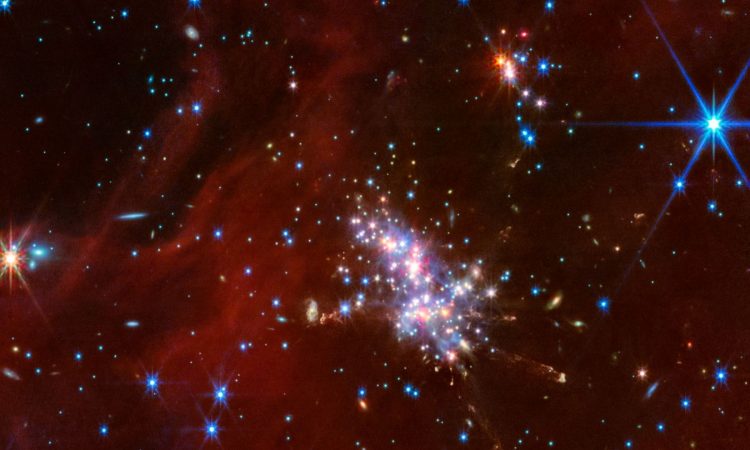
The James Webb Space Telescope studied the outskirts of our galaxy, the Milky Way, and thus captured a stunning new photo.
A team of astronomers pointed the Webb Telescope toward the outskirts of the Milky Way, observing a region scientists call the “Extreme Outer Galaxy.”
This area is about 58,000 light-years away, or the “galactic center”. For comparison, the Solar System is located halfway between the galactic center and the edge of the Milky Way.
That distance is only 26,000 light-years, so when we say “extreme” for these new observations, it’s more than hyperbole.
“We knew about these star-forming regions, but we weren’t able to delve into their properties,” said Natsuko Izumi of Gifu University and the National Astronomical Observatory of Japan.
The Milky Way’s star-birth regions observed by the team using JWST’s Near Infrared Camera (NIRCam) and Mid-Infrared Instrument (MIRI) are enveloped in dense and vast conglomerates of gas called “molecular clouds.”
The area is about 58,000 light-years from the heart of the Milky Way
The two molecular clouds in question are called Digel Cloud 1 and Digel Cloud 2, which are many light-years across and are now being imaged in unprecedented detail.
Among the elements of these swarms visible in the images are extremely young protostoss. These are stellar bodies that have not yet gathered enough material from their prenatal cocoons of gas and dust to accumulate the mass necessary to trigger the nuclear fusion of hydrogen into helium in their cores, the process that defines an adult or “main sequence” star.
Digel clouds have a slightly different composition than other . They lack elements heavier than hydrogen and helium, which astronomers somewhat confusingly call “metals.”
This metal-poor nature makes the Digel Clouds a good proxy for studying dwarf galaxies and for understanding the early history of the Milky Way, before dying stars increased its metal concentration. This team looked for activity in four young star clusters within the Digel 1 and 2 clouds, named 1A, 1B, 2N, and 2S, respectively.
In 2S, astronomers observed a dense and active region of young stars emitting long jets of matter from their poles. The team was also able to distinguish the presence of a “subgroup” of stars in 2S.
The Digel Clouds have a slightly different composition than other regions of the Milky Way
“We know from studying other nearby regions that as stars form during their early life, they begin to emit jets of matter from their poles,” said Mike Ressler of NASA’s Jet Propulsion Laboratory in Southern California , study team member and principal investigator of the observations program.
“What was fascinating and amazing about the Webb Telescope data is that there are multiple jets coming out in all different directions from this cluster of stars.”
This is just the beginning of the team’s study of the Digel Clouds and the Extreme Outer Galaxy with Webb’s help. They will continue to push to the edge of the Milky Way to solve puzzles such as the relative abundance of stars of different masses within star clusters in this galaxy, he writes.

